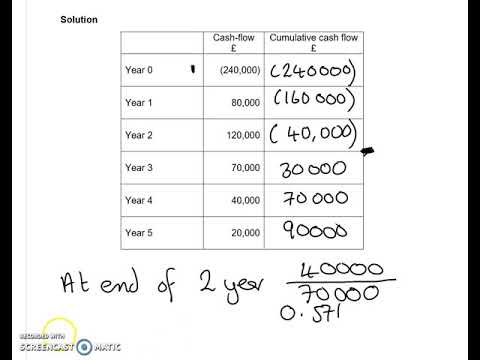
The articles and research support materials available on this site are educational and are not intended to be investment or tax advice. All such information is provided solely for convenience purposes only and all users thereof should be guided accordingly. The cost for produced products remains here until the company sells the goods to distributors or consumers. Using the cost flow equation, you can see how failing to record the $9,000,000 loss would understate cost of goods sold. He’s visited over 50 countries, lived aboard a circus ship, and once completed a Sudoku in under 3 minutes (allegedly). Technology and global trends are always changing – and so must a manufacturing business if it wishes to stay agile.

How to Prepare Income Statements for a Manufacturing Company
Manufacturing companies often use data from the manufacturing accounting process to compile compliant financial reports. Capable inventory management and MRP software systems also automatically compile manufacturing accounting data into readily summary of gross profit percentage. abstract usable reports. A manufacturing account tracks a manufacturing business’s production costs, materials used, and inventory levels. Figure 1.9 presents an income statement for Fashion, Inc., a retail company that sells clothing. Also, the schedule of cost of goods sold is simply included in the income statement.
The total cost of production is credited to the manufacturing account by giving a debit to the trading account. By failing to record the inventory loss, Rite Aid overstated inventory (an asset) on the balance sheet by $9,000,000 and understated cost of goods sold (an expense) by $9,000,000 on the income statement. This ultimately increased profit by $9,000,000 because reported expenses were too low. An automated inventory management system facilitates accurate inventory accounting and can greatly reduce the time and cost required to manage physical stock. The solution to this dilemma is to look at the process of upgrading your manufacturing accounting processes as a cycle of continuous improvement.
To Ensure One Vote Per Person, Please Include the Following Info
- At Finance Strategists, we partner with financial experts to ensure the accuracy of our financial content.
- A manufacturing company has no need to prepare a manufacturing account, statement of production, or a cost sheet, before preparing the income statement.
- Our writing and editorial staff are a team of experts holding advanced financial designations and have written for most major financial media publications.
- A relevant exception is inventory valuation which generally needs to conform to local jurisdictions for taxing purposes.
- The weighted average is generally the least common cost flow assumption for manufacturers.
Working closely with manufacturers on case studies and peering deeply into a plethora of manufacturing topics, Mattias always makes sure his writing is insightful and well-informed. When you leave a comment on this article, please note that if approved, it will be publicly available and visible at the bottom of the article on this blog. For more information on how Sage uses and looks after your personal data and the data protection rights you have, please read our Privacy Policy. Having these standards allows you to detect variances that can be analyzed, allowing trends to be spotted, and enabling you to make the right adjustments to pricing. If you are spending more on manufacturing the product what is a life insurance premium than necessary, you will not meet your income targets.
Activity-based costing (ABC) is a way to assign indirect manufacturing costs like overhead to products or processes. Though it takes more work than applying a standard overhead rate, it generates more accurate cost estimates. Bookkeeping is one of the most time-consuming aspects of manufacturing accounting. Maintaining accurate and organized records of all the transactions and costs involved in production can be incredibly laborious if you do it manually. It is crucial to select accounting software that seamlessly integrates with other essential programs, such as inventory management, production scheduling, and invoice generation.
Do you own a business?
Manufacturing accounting is the process of forecasting, analysing, and reporting on the financial status of a manufacturing organisation. Manufacturing accounting also involves tracking raw material costs, making inventory valuations, and strategically pricing finished goods. The direct costs are often traceable to the creation of the product and the maintenance of low variability in the overheads allows businesses to ensure a healthy margin of profit. It involves tracking the costs for every item you produce, including direct materials, direct labor, and manufacturing overhead. A relevant exception is inventory valuation which generally needs to conform to local jurisdictions for taxing purposes.
Direct Labor Manufacturing Account
We recommend using software that is well integrated with the overall production and inventory management solution of choice. This ensures seamless data movement between the shopfloor, inventory, and the back office, and further simplifies managing your business. If you are yet to implement a manufacturing ERP system, consider picking one with built-in financial reporting capabilities. For example, MRPeasy includes one-click product cost estimating, intelligent reporting, and built-in integrations with major financial software providers like Xero and QuickBooks Online. On your typical manufacturing balance sheet, you should have raw materials, work in process, and finished goods as part of your inventory calculation. You will also want a periodic or perpetual inventory system to track how many products you have in your production line at any one time.
It is therefore mostly an internal business management process aimed at better decision-making on budgeting, cost control, constraint and margin analysis, etc. Financial accounting is primarily concerned with the creation of core financial statements such as cash flow reports, balance sheets, income reports, and profit debt service coverage ratio statements. These documents are important when the manufacturing business needs to showcase its credibility and financial performance to investors or funding partners when raising capital. This form of accounting is also useful when the company undergoes regulatory checks and inspections. Financial accounting allows businesses to assess overall monetary health and manage finances in the business, making it a crucial aspect of manufacturing bookkeeping processes.
